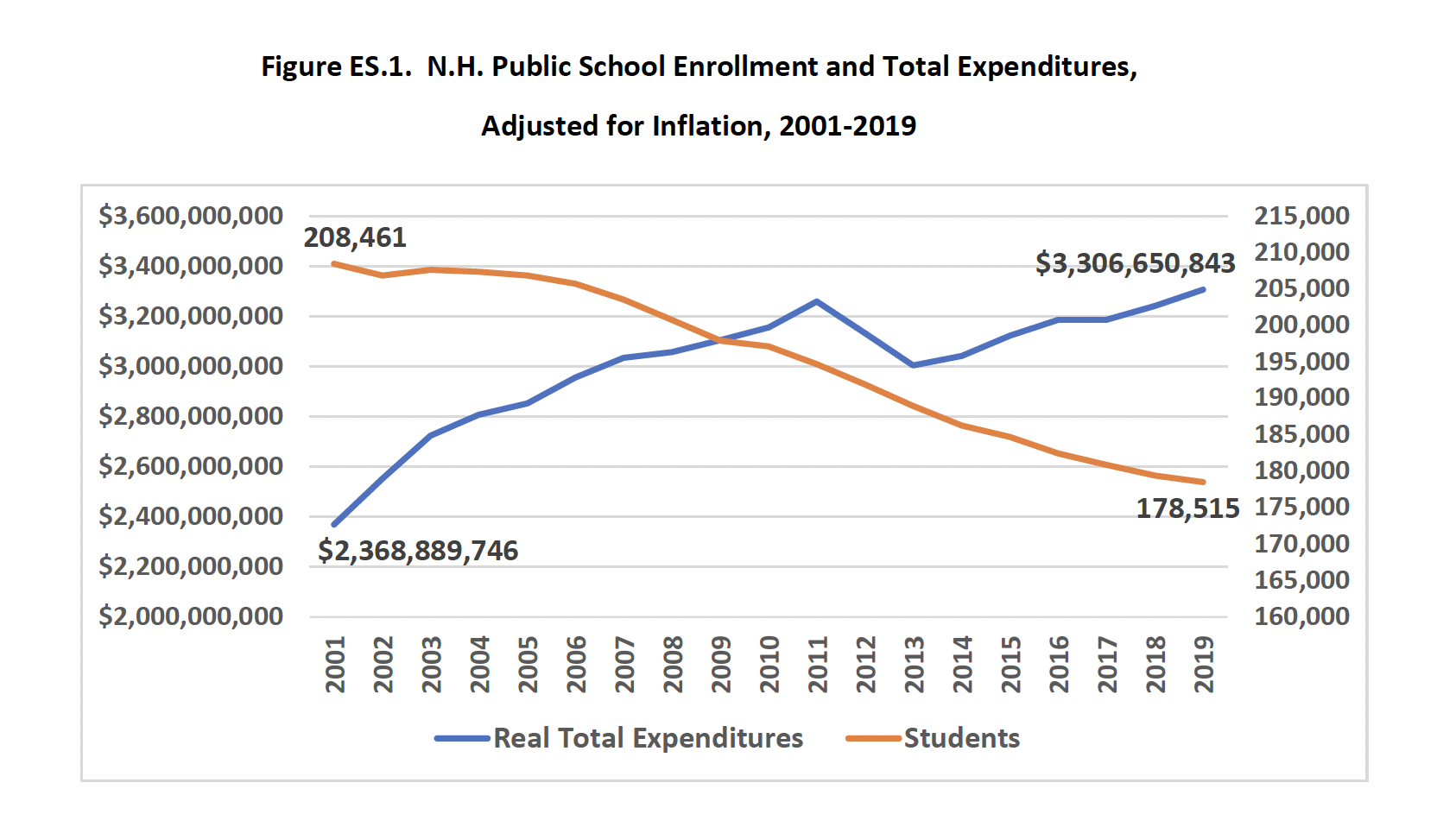Manchester Mayor Jay Ruais is frustrated.
In his Fiscal Year 2026 budget, the first-term Republican proposed spending more than $236 million on the city’s schools. That’s an increase over the $234.5 million current budget and $10 million higher than in 2024.
But what are the headlines?
“Proposed Manchester school cuts include teachers, district jobs to cover $9.5M budget gap” is how the Union-Leader reported the story.
At WMUR, it’s “Manchester’s school district superintendent outlines cuts needed to meet budget for next year.”
During last Tuesday’s Board of Aldermen meeting, Manchester Teachers Union president Sue Hannan told the board, “We are not going back to the days of doing more with less. We are at the time of we do better together.”
“Cuts?” “More with less?”
The data show Manchester schools have far fewer students than they did a generation ago, or even just a few years ago. And yet over that same period, taxpayer spending on the public school system has soared.

(Credit: Josiah Bartlett Center for Public Policy)
In 2001, there were 17,407 students in Manchester schools, and the budget was around $152 million.
In 2019, the number of students had fallen to 13,522, while spending increased to $186 million.
Today, Manchester educates 11,865 students — a loss of 5,542 pupils — and the budget is 55 percent higher than in 2001.
Defenders of increased spending say that, in inflation-adjusted dollars, spending is flat. That would be true if enrollment had remained flat, too. Instead, it’s fallen by a third.
The trend is similar across the state.
“Fall enrollment for this school year was 162,660 students, which is down from the fall of 2023 when it was 165,082 and the year prior when it was recorded at 167,357,” the New Hampshire Department of Education (DOE) reported earlier this year.
As a result, per-pupil spending has hit new records.
“The new statewide average operating cost per pupil of $21,545 is an increase from last year’s average cost per pupil of $20,323 (or $20,933 adjusted for inflation),” the state DOE reported, “Total expenditures for the 2023-2024 school year also approached a new record of more than $4 billion in New Hampshire.
And yet, school boards and teachers unions in cities like Manchester complain of “cuts.” How?
In the case of Manchester, it’s the difference between budgets and “proposed budgets.” Ruais’ budget added around $2 million in new spending. But the Manchester school district had proposed a spending increase of more than $11 million. No cut in spending, just less money than the school board wanted to spend.
As a result, says Manchester School District Superintendent Dr. Jennifer Chmiel, the district says it will have to cut 38 teaching and staff positions and reduce some planned spending on sports programs.
Or, as the Manchester Ink Link reported, “School board predicts dire consequences if $9.5 million reduction from their budget request is upheld.”
After Tuesday’s board meeting, featuring a steady stream of anger and outrage from advocates for increased spending, Ruais offered an olive branch. He agreed to increase spending by $3.25 million, which is $1.25 million more than his budget. That would prevent teacher layoffs at elementary schools, avoid changes to transportation, and fund the expansion of middle school sports.
“If the mayor’s proposal were to pass, the school district would have received $10.75 million in increased revenue over the last two years,” a source close to city hall told NHJournal on background. “And only $4.25 million of it is city taxpayer dollars.
“Over that same period, taxpayers will have been spared $12.45 million of increased spending requested by the school district. That’s a big win for taxpayers, and without cutting too deeply, or too quickly.”





